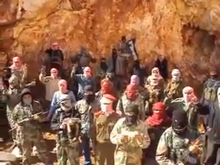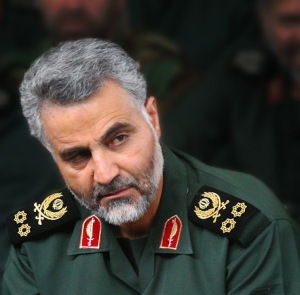For the last 50 fifty years, Syrians have endured two plagues, both by the name Assad; first the by father, Hafez from 1971-2000 and then by his son to the present day, Bashar, referred to as the lion and the lion’s son.
After the collapse of the Soviet Union in 1989, the end of the Cold War, Iraq’s invasion of Kuwait, and Syria’s joining of the coalition forces in the Gulf War in 1991 with the start of the peace process, Western countries have pressured the Syrian government to release the Syrian detainees as a prerequisite for the West’s openness to the isolationist regime in an attempt to reverse the behavior of the oppression that was infamous for its massacres.
In the city of Hama and the notorious Palmyra prison, Rifaat al-Assad, the brother of Hafez al-Assad, committed seven terrible massacres, in addition to the rest of the prisons and detention centers inside the rest of the security branches. The foundations of these prisons and detention centers and the methods of torture were taken from a “play book” by a Nazi officer who was responsible for many mass graves during World War II. From here begins the story of this oppressive regime that has turned Syria not only into detention centers and prisons, but into human slaughterhouses, as described by Amnesty International in its recent reports.
During the Assad son era, the brutality of this criminal regime on the majority of the Sunni population increased with the recruitment of followers from the Iranian, Iraqi, Lebanese, Afghan and sectarian Shiite militias to begin the bureaucracy of death, torture and field executions of all forms on the Syrian people in an attempt to curb the popular movement against this criminal regime.
Then, with the help of the Russian bear, Bashar Al Assad instituted a whole new phase for killing innocent Syrians by target bombing cities, towns, villages, hospitals, schools and vital community buildings and has
not stopped. The Syrian hell inside prisons includes rape, killing by starvation and torture, not to mention the pandemic Covid 19 Corona, which occupies most countries of the world. And thus, it is the responsibility of the international community to pursue the perpetrators of these violations against humanity.
Observers believe that Bashar Al-Assad will get away with impunity just as his father, Hafez Al-Assad escaped punishment during the Hama massacres, thanks to the efforts and favor of Moscow, which obstructed the efforts of the international community through the Russian-Chinese veto against any project presented by member states or others. Thereby, overriding the need to negotiate with the Red Cross to reveal the fate of the missing.
Within the last couple of years, the horrific massacres exposed through the leaked “Caesar” photos, have given proof beyond doubt of Assad’s atrocities, which include over 11,000 victims of torture and field executions practiced by the Syrian regime since the start of the Syrian revolution since 2011.
Today, there is still no end in sight to the Syrian violence that has killed or displaced over 12 million of its citizens. Detention is a weapon of war against humanity that the Syrian regime uses to complete its plans. Among them is the process of demographic change that has pushed the country into internal displacement of its citizens and asylum in foreign countries.
There is mounting pressure for the Syrian repressive authorities to reveal the fate of thousands of Syrian detainees after years of denial. But, so far, their has only been a deafening silence from the regime.
There must be a clear signal from the world leaders confirming the end of the most important obstacle to the Syrian tragedy, its “torture prisons”…It is a ‘responsibility of the international community’.
Bridge of Peace Syria does not publish the authors of articles in order to protect their identities.

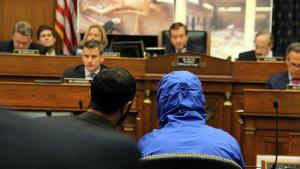 In the year 2014, a photographer, code named “Caesar”, fled Syria armed with a thumb drive of over 55,000 images of war crime atrocities being perpetrated in Syrian prisons by the Bashar al Assad Regime. These images found their way to the floor of the U.S. Congress and Senate that eventually, in a bipartisan vote, passed a bill of sanctions against Assad and his government called, the ‘Caesar Act’.
In the year 2014, a photographer, code named “Caesar”, fled Syria armed with a thumb drive of over 55,000 images of war crime atrocities being perpetrated in Syrian prisons by the Bashar al Assad Regime. These images found their way to the floor of the U.S. Congress and Senate that eventually, in a bipartisan vote, passed a bill of sanctions against Assad and his government called, the ‘Caesar Act’. Earlier this year, U.S. President Trump signed The Caesar Syria Civilian Protection Act, also known as the Caesar Act into law. This legislation places sanctions on the Syrian government, including Syrian president Bashar al-Assad, for war crimes against the Syrian population.
Earlier this year, U.S. President Trump signed The Caesar Syria Civilian Protection Act, also known as the Caesar Act into law. This legislation places sanctions on the Syrian government, including Syrian president Bashar al-Assad, for war crimes against the Syrian population. A number of Syrian operated industries, including those related to infrastructure, military maintenance and energy production, are targeted. The bill also targets individuals and businesses who provide funding or assistance to the president of Syria. Iranian and Russian entities are addressed for their governments’ support of Assad in the Syrian Civil War. The legislation imposes fresh sanctions on entities conducting business with the Syrian government and its military and intelligence agencies. It also aims to encourage negotiations by allowing the President of the United States to waive sanctions if the parties are engaged in meaningful negotiations and the violence against civilians has ceased.
A number of Syrian operated industries, including those related to infrastructure, military maintenance and energy production, are targeted. The bill also targets individuals and businesses who provide funding or assistance to the president of Syria. Iranian and Russian entities are addressed for their governments’ support of Assad in the Syrian Civil War. The legislation imposes fresh sanctions on entities conducting business with the Syrian government and its military and intelligence agencies. It also aims to encourage negotiations by allowing the President of the United States to waive sanctions if the parties are engaged in meaningful negotiations and the violence against civilians has ceased. When the law came into effect in mid-June, 2020 the regime and their Iranian and Russian allies were ready to deal with it; not to accept the limitations it would have on them and their continued criminal operations but to pass the effects of the sanctions on to the already unbearable suffering of the Syrian people.
When the law came into effect in mid-June, 2020 the regime and their Iranian and Russian allies were ready to deal with it; not to accept the limitations it would have on them and their continued criminal operations but to pass the effects of the sanctions on to the already unbearable suffering of the Syrian people. The Assad government is calling on the people’s patience and endurance as they pass the hardships of currency devaluations and skyrocketing prices onto their backs. The regime cares nothing about the cause or reason for these sanctions mentions nothing about Caesar and his pictures that show proof of the atrocities and war crimes that exist in the regime prisons / concentration camps and that ignited interest in the U.S. Congress and Senate to pass this law. Quite the opposite actually. Assad and his minions continue to deny the existence of torture, beatings, rape and starvation in his prisons calling the 55,000+ Caesar images fabricated while all the while these images stand as a testament to the horrors that the Syrian people have endured for over eight years.
The Assad government is calling on the people’s patience and endurance as they pass the hardships of currency devaluations and skyrocketing prices onto their backs. The regime cares nothing about the cause or reason for these sanctions mentions nothing about Caesar and his pictures that show proof of the atrocities and war crimes that exist in the regime prisons / concentration camps and that ignited interest in the U.S. Congress and Senate to pass this law. Quite the opposite actually. Assad and his minions continue to deny the existence of torture, beatings, rape and starvation in his prisons calling the 55,000+ Caesar images fabricated while all the while these images stand as a testament to the horrors that the Syrian people have endured for over eight years. If the Dead Could Speak is a Photographic Display of evidence that includes many of Caesar’s images that can be viewed at the United States Holocaust Museum and at the United Nations.
If the Dead Could Speak is a Photographic Display of evidence that includes many of Caesar’s images that can be viewed at the United States Holocaust Museum and at the United Nations.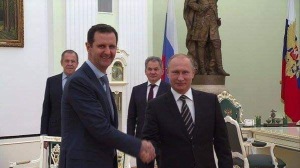 Loyal Russian and Syrian websites report that Russian President Vladimir Putin issued a presidential decree about Syria, which Syrians described as a continuation of the country’s occupation.
Loyal Russian and Syrian websites report that Russian President Vladimir Putin issued a presidential decree about Syria, which Syrians described as a continuation of the country’s occupation.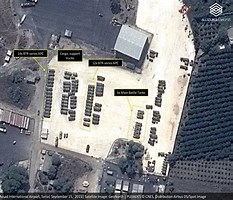

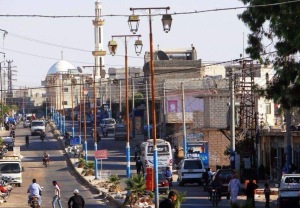 Author Anonymous:
Author Anonymous: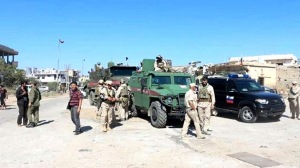
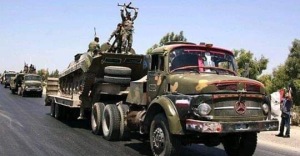 It is important here to mention that now in Daraa there is the arrival of very large military reinforcements and, a large number of soldiers in southern Syria are getting ready to storm several villages. However, negotiations continue between the committees representing the Syrian revolution with the Russian military police.
It is important here to mention that now in Daraa there is the arrival of very large military reinforcements and, a large number of soldiers in southern Syria are getting ready to storm several villages. However, negotiations continue between the committees representing the Syrian revolution with the Russian military police. The blessed month of Ramadan is a religious and spiritual occasion that focuses on purifying and refining oneself and that extends to solidarity and compassion with other members of the community and beyond.
The blessed month of Ramadan is a religious and spiritual occasion that focuses on purifying and refining oneself and that extends to solidarity and compassion with other members of the community and beyond.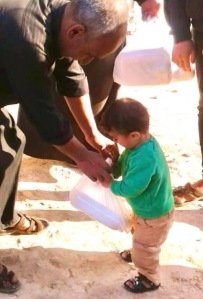 And, this worship is not complete without first visiting family members and offering food and some money; all parents do this especially with their married daughters, as this is the relationship of the womb in Islam.
And, this worship is not complete without first visiting family members and offering food and some money; all parents do this especially with their married daughters, as this is the relationship of the womb in Islam. In short, the economy during this years’ Ramadan in Syria is the worst it has been in the memory of most of us. The Syrian regime does not offer any subsidy at all. On the contrary, they impose heavier taxes and fees on citizens. At the same time, prices for essential items soar; a loaf of bread costs over $1,000 Syrian Pounds, the price of a gas cylinder for cooking has skyrocketed so much that almost no one can afford it. Instead, most everyone cooks their food with firewood.
In short, the economy during this years’ Ramadan in Syria is the worst it has been in the memory of most of us. The Syrian regime does not offer any subsidy at all. On the contrary, they impose heavier taxes and fees on citizens. At the same time, prices for essential items soar; a loaf of bread costs over $1,000 Syrian Pounds, the price of a gas cylinder for cooking has skyrocketed so much that almost no one can afford it. Instead, most everyone cooks their food with firewood. In Syria, the regime exploits everything and now, with the new Corona Virus at our doorstep, Assad is exploiting that too while at the same time denying the existence of infected cases in Syria.
In Syria, the regime exploits everything and now, with the new Corona Virus at our doorstep, Assad is exploiting that too while at the same time denying the existence of infected cases in Syria. Despite the presence of large numbers of injured people in the suburbs of Damascus and the countryside of Sayyida Zeinab and Jaramana with large spreading of the virus being discovered, the Syrian regime continues to deny everything related to this horrific epidemic. Interestingly, these infected areas are largely inhabited by the Shiite Iranian militias and the Lebanese Hezbollah.
Despite the presence of large numbers of injured people in the suburbs of Damascus and the countryside of Sayyida Zeinab and Jaramana with large spreading of the virus being discovered, the Syrian regime continues to deny everything related to this horrific epidemic. Interestingly, these infected areas are largely inhabited by the Shiite Iranian militias and the Lebanese Hezbollah. If a Syrian citizen wants to buy a kilo of sugar, he must stand for several hours in front of the sale halls. It is impossible to object to anything and all the while there almost complete lawlessness in areas under regime control. Armed robbery incidents, banditry, looting and killing is all met with the Syrian regime turning a blind eye. Criminals are running free to do as they please and it is criminals who rule the country.
If a Syrian citizen wants to buy a kilo of sugar, he must stand for several hours in front of the sale halls. It is impossible to object to anything and all the while there almost complete lawlessness in areas under regime control. Armed robbery incidents, banditry, looting and killing is all met with the Syrian regime turning a blind eye. Criminals are running free to do as they please and it is criminals who rule the country.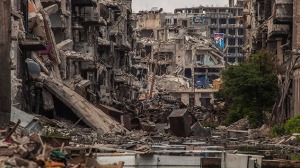 The first stage was an attack by violent shelling that lasted for about 18 hours, leaving dozens of dead and countless wounded; the bombing then spread to Al-Rifai and Adawiya.
The first stage was an attack by violent shelling that lasted for about 18 hours, leaving dozens of dead and countless wounded; the bombing then spread to Al-Rifai and Adawiya. Following the bombing, the second phase of the air assault was the storming of the neighborhoods with tanks, armored vehicles and machine guns.
Following the bombing, the second phase of the air assault was the storming of the neighborhoods with tanks, armored vehicles and machine guns. 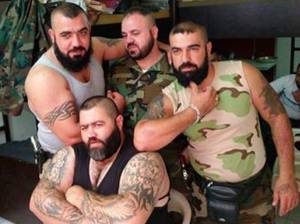 Hundreds of shabeeha entered the neighborhoods performing field executions, house raids and arrests of dozens of remaining residents and the rape of girls who they then the slaughtered with their knives. Those who were still alive were shot in the head and chest at close range.
Hundreds of shabeeha entered the neighborhoods performing field executions, house raids and arrests of dozens of remaining residents and the rape of girls who they then the slaughtered with their knives. Those who were still alive were shot in the head and chest at close range.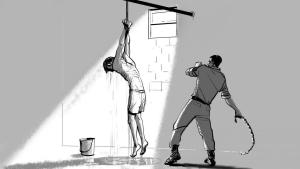 men, children and women detainees, and they forced the men to undress and then torture them, some of them were dying during torture, and after they finished with the men it was our turn.
men, children and women detainees, and they forced the men to undress and then torture them, some of them were dying during torture, and after they finished with the men it was our turn. The following is testimony from a defector photographer:
The following is testimony from a defector photographer: